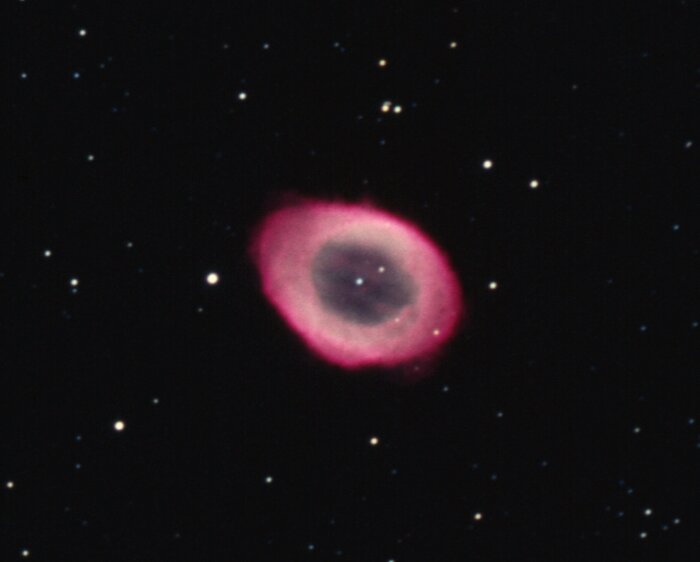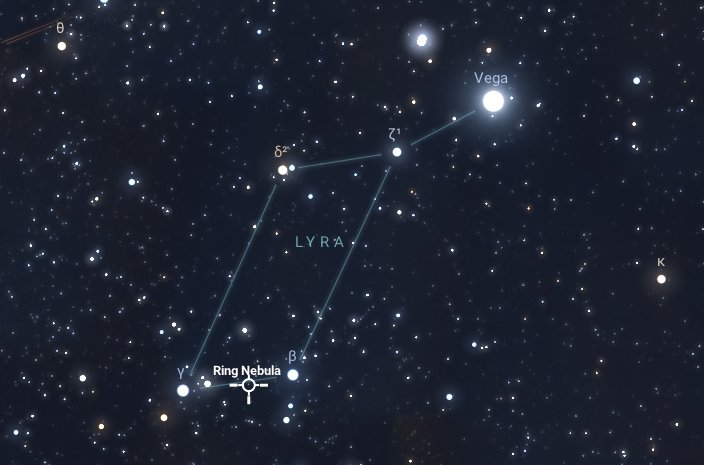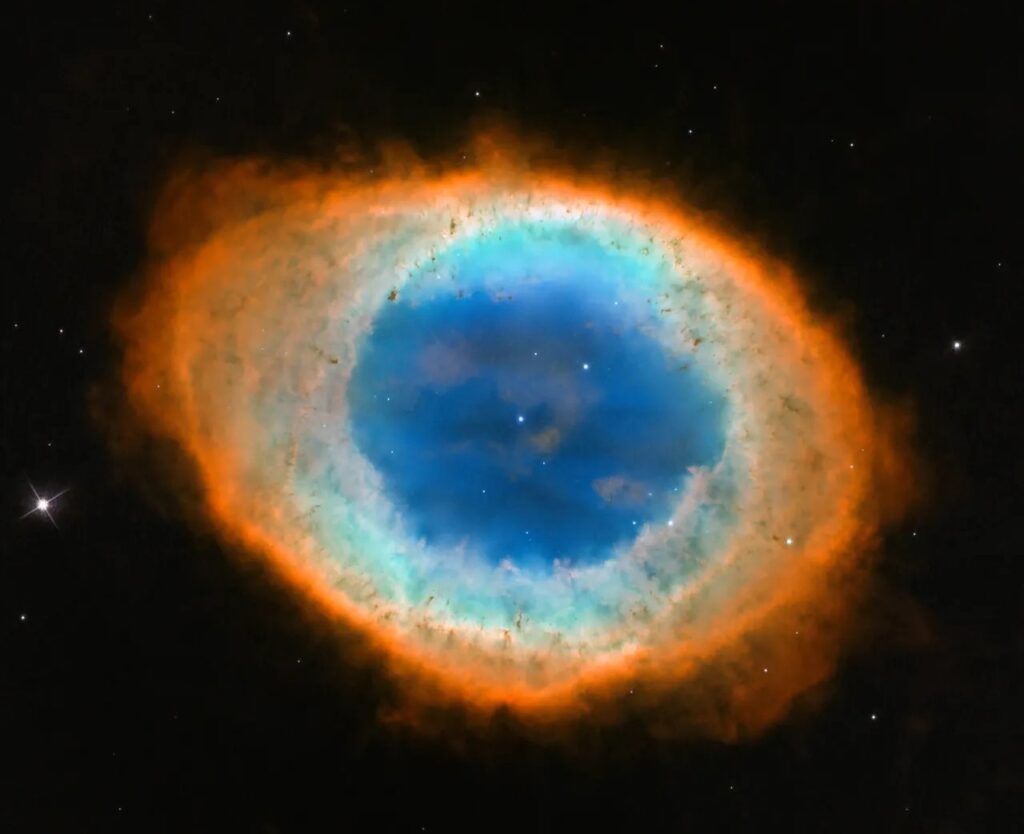M57, also known as the Ring Nebula, is one of the most famous planetary nebulae in the night sky. It is relatively easy to find, lying between the bright stars Vega and Sulafat, in the northern constellation of Lyra. It’s a popular target for amateur astronomers due to its brightness and distinctive ring-like appearance.
The nebula was discovered by the French astronomer Antoine Darquier de Pellepoix in 1779. It was later cataloged by Charles Messier on January 31, 1779, and given the designation M57 in his famous Messier Catalogue.
Nature and Composition
M57 is a planetary nebula, which is a type of emission nebula consisting of an expanding shell of ionized gas ejected from a dying star during its red giant phase. The ionized gas is primarily composed of hydrogen and helium, along with traces of other elements such as oxygen, nitrogen, and sulfur. The central star of M57 is a white dwarf, the remnant of a Sun-like star that has exhausted its nuclear fuel and shed its outer layers.
Physical Characteristics
The central hole or ‘ring’ in the nebula is formed by the ejected material expanding away from the dying star, creating a spherical shell of gas and dust. This gives it its distinctive appearance resembling a ring or a donut. The diameter of the ring is estimated to be about one light-year, while its distance from Earth is approximately 2,300 light-years.

Evolution and Future
The central star of M57 will continue to cool and fade over millions of years, eventually becoming a cold, dark white dwarf. The expanding shell of gas will gradually dissipate into space, eventually merging with the interstellar medium, enriching it with heavy elements synthesized in the star’s core.
The Ring Nebula, serves as a fascinating celestial object for astronomers and astrophotographers alike, providing valuable insights into the life cycle of stars and the dynamics of interstellar gas clouds.
Observations and Imaging
M57 is easily observed with modest telescopes under good viewing conditions. It appears as a small, slightly elliptical, fuzzy patch of light. Higher magnification reveals the central hole and the fainter outer ring structure more clearly.
Astrophotography allows for even more detailed imaging, capturing the intricate structures and faint outer extensions of the nebula.
The Ring Nebula can generally be seen throughout the year in the northern hemisphere. However, it is most easily observed during the summer months (June, July, and August) when the constellation Lyra, where M57 is located, is high in the sky during the night

Over the summer months, Lyra rises in the east after sunset and reaches its highest point in the sky during the late evening hours, making it an ideal time to observe deep space objects in this part of the sky, including the Ring Nebula.
In contrast, during the winter months, Lyra is generally lower in the sky or not visible at all during the evening hours, making it more difficult to observe M57. However, it may still be visible during the early morning hours for observers in the northern hemisphere during the winter months.



